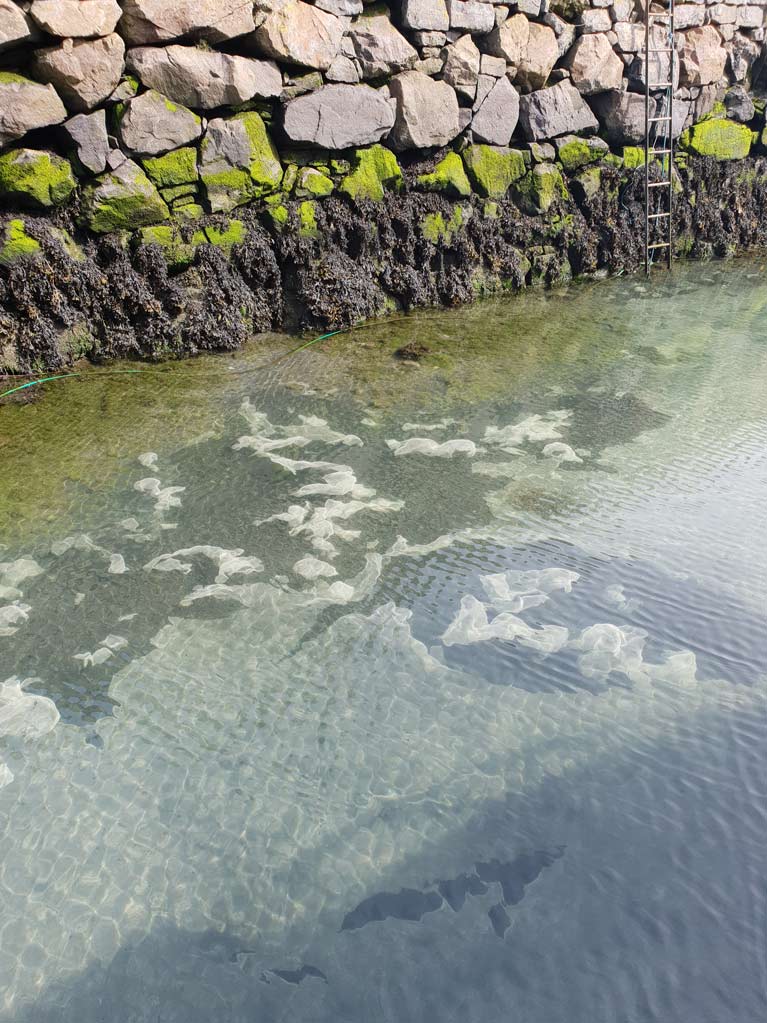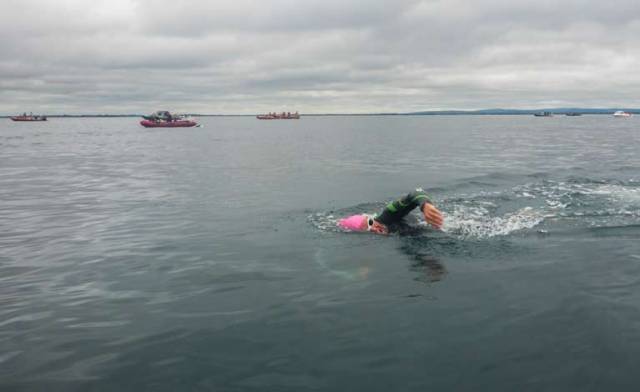As open water sea swimmers prepare for a Galway Bay crossing this weekend, Irish Water has said there is “no proven link” between a recent serious pollution incident in the city and the quality of bathing water off Galway’s beaches writes Lorna Siggins
However, swimmers have called for more regular and longer-term bathing water quality testing, and more transparency in relation to water quality issues.
Six weeks ago, Galway City Council prohibited swimming off beaches at Silver Strand and Salthill and issued a warning about Grattan road beach in Lower Salthill, after elevated levels of bacteria were detected.
The prohibitions were lifted in time for the June bank holiday weekend, and the city council initially ruled out several possibilities, including Mutton Island sewage treatment plant, visiting cruise ships and slurry spreading run-off.
It subsequently stated that the elevated levels of bacteria were due to a fault with the test.
A month later, on July 5th, Galway harbourmaster Capt Brian Sheridan stated in response to media queries that “the current sewage issue is not as a result of port operational activities, including cruise ships that anchor in the bay”.
Galway Bay is a popular destination for cruise ships, which are covered by the international MARPOL regulations. Vessels from another flag state can only discharge treated sewage at least three nautical miles from the nearest land or untreated sewage at least 12 nautical miles from the nearest land.
Capt Sheridan stressed that he issued Galway Port Company’s own prohibition notices, stating that ships must be at least 12 nautical miles west of the Aran islands.
Capt Sam Field Corbett, who owns the old dock known as the “Mud docks” in the inner Galway harbour, said he believed the source of contamination could be linked to a sewage overflow, which he first reported to Galway City Council in March, and to the Environmental Protection Agency (EPA) in early May when there was no action.
 Capt Sam Field Corbett sent this photo to the EPA in May. Corbett says it depicts evidence of sewage and waste at low tide in the Galway city mud dock
Capt Sam Field Corbett sent this photo to the EPA in May. Corbett says it depicts evidence of sewage and waste at low tide in the Galway city mud dock
On May 15th, he informed the EPA that it appeared the sewage had stopped flowing, but evidence of human waste was still present in what he described as “once a thriving eco-system”
On June 14th, Irish Water announced that it was upgrading one of Galway’s Victorian sewer systems, which would address “odour and blockage issues” , as part of a 2 million euro project with Galway County Council due for completion in October.
Irish Water has confirmed that a sewer blockage had caused an overflow at the Mud Docks, and this was “cleared”, and a pipe in Eyre Square repaired.
It said that RPS consultants were separately conducting survey works across the entire Galway city network.
“There is no proven link to the issue at the Mud docks and any issues arising at the bathing waters in Galway city in late May,”Irish Water said, noting that all data reported to date during the 2019 bathing water season in Galway city had been classified as “excellent” or “good”.
Galway sea swimmer Brian Coll, who is undertaking the Frances Thornton Memorial Galway Bay Swim in aid of Cancer Care West this weekend with his family, said he believes there needs to be more frequent water quality testing from April to October.
"The current situation where bathing water quality is tested every two weeks is insufficient, given that Salthill has one of the most active sea swimming communities in Ireland," he said.
"There needs to be weekly water testing and also more active environmental monitoring for visiting cruise ships. This is standard in other cruise ship destinations such as Alaska and Norway, where there are regular checks for any discharges of sewage and wastewater from the ships,” he said.
“We need to have confidence in the quality of our bathing water,” Mr Coll noted.
Sampling of bathing water only needs to take place once a month between May and September under the 2006 EU Bathing Water Directive, but the EPA says some local authorities test more frequently.
The directive is going to be reviewed, and frequency of testing may form part of this, but the review is at its early stages.
Galway City Council's Environment Department said that bathing water quality testing is carried out in accordance with a schedule agreed in advance with the EPA.
"For Blue Flag beaches this is every fortnight and for other beaches this is every week. Once the sample is taken it takes 48 hours for the test to react and as soon as these results are received they are published. Therefore they are published within 48 hours of the test but the test is carried out every two weeks for Salthill and Silverstrand. This is exactly the same frequency any other Blue Flag beach in the country," it said.
Galway City Council says it tests every second week. Results of bathing water quality testing on frequently used beaches around the coastline are posted on the EPA’s website, beaches.ie
































































